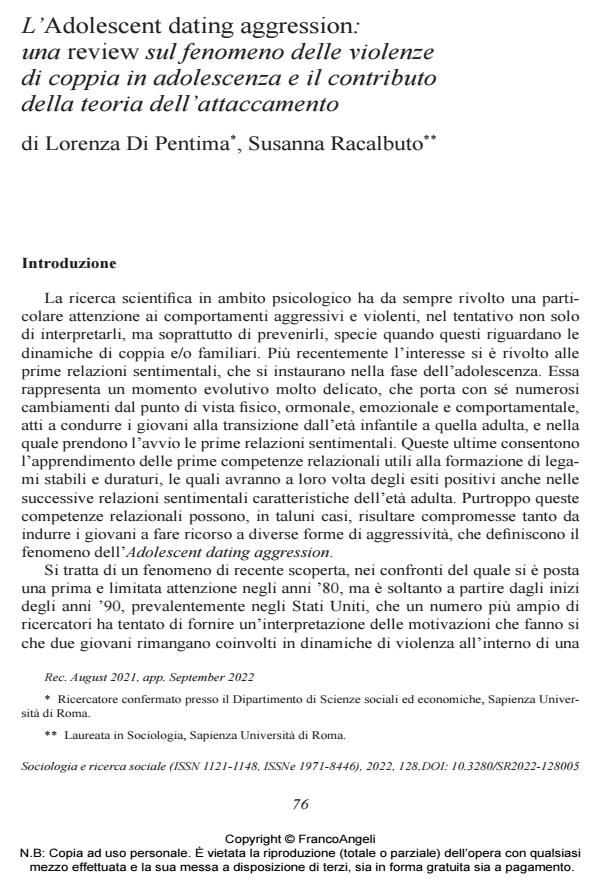Adolescent dating aggression: a review of the phenomenon of couple violence in adolescence and the contribution of attach-ment theory
Journal title SOCIOLOGIA E RICERCA SOCIALE
Author/s Lorenza Di Pentima, Susanna Racalbuto
Publishing Year 2022 Issue 2022/128
Language Italian Pages 27 P. 76-102 File size 286 KB
DOI 10.3280/SR2022-128005
DOI is like a bar code for intellectual property: to have more infomation
click here
Below, you can see the article first page
If you want to buy this article in PDF format, you can do it, following the instructions to buy download credits

FrancoAngeli is member of Publishers International Linking Association, Inc (PILA), a not-for-profit association which run the CrossRef service enabling links to and from online scholarly content.
The present review, focused on dating aggression in adolescence, has two ob- jectives: 1) to describe the relational dynamics of adolescent couples in which one partner exercises physical and/or psychological violence towards the other; 2) provide an interpretation of causal factors according to attachment theory. Studies conducted with the attachment framework show that insecure ties with parental figures are at the origin of: a) mental representations of the self and the other that do not allow a correct reading of the intention of others; b) a lack of mentalization, that is, difficulty in understanding the inner processes of others; c) inadequate skills in the regulation of one’s own emotions. All these factors deter- mine a risk of violent behavior even within the relationship.
Lorenza Di Pentima, Susanna Racalbuto, L’Adolescent dating aggression: una review sul fenomeno delle violenze di coppia in adolescenza e il contributo della teoria dell’attaccamento in "SOCIOLOGIA E RICERCA SOCIALE " 128/2022, pp 76-102, DOI: 10.3280/SR2022-128005